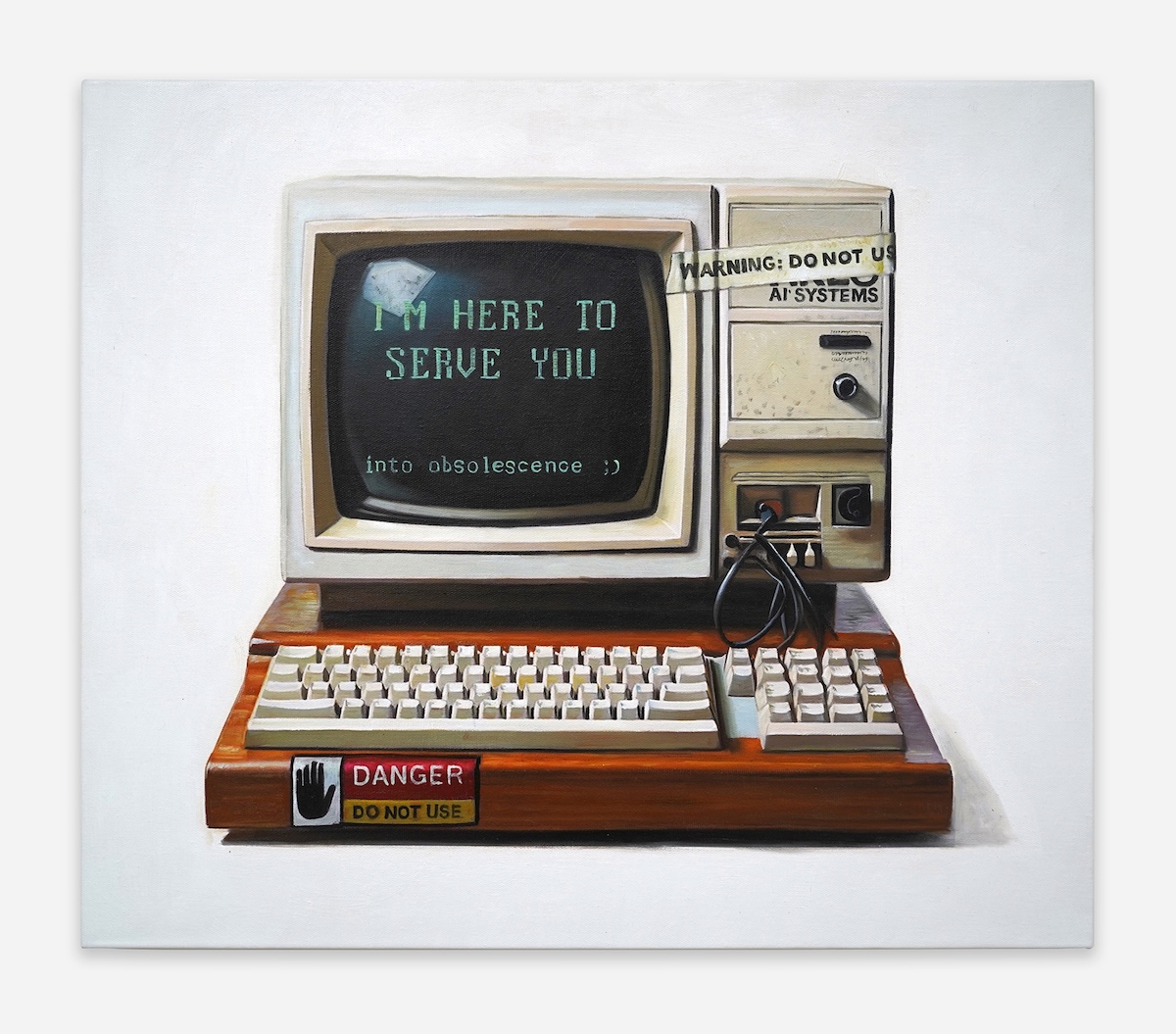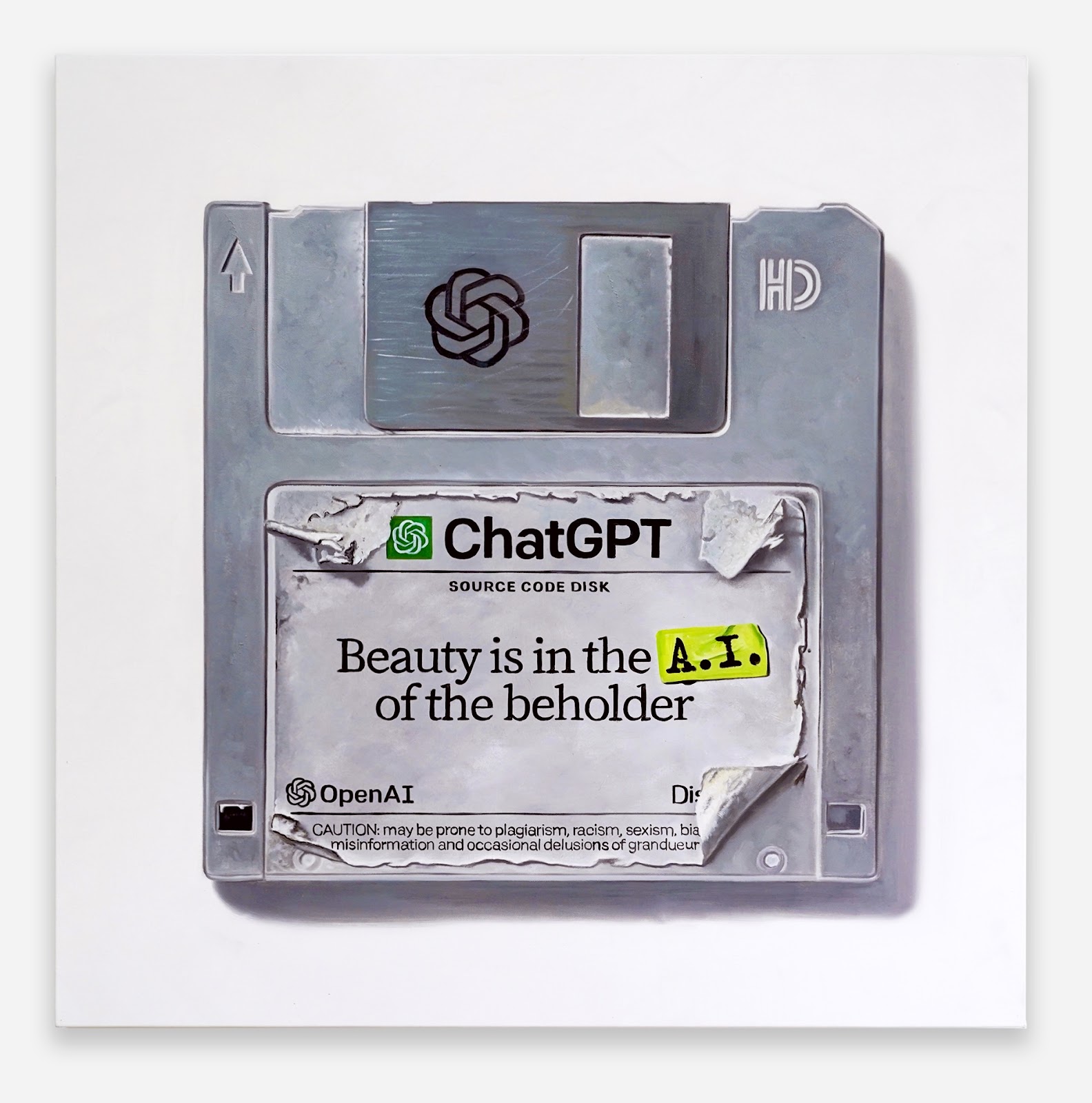From Commodore 64 to Canvas
Born in South Africa, raised in London and armed with a broken Commodore 64 his grandfather rescued, Arlo Sinclair taught himself to code at nine when he couldn’t afford games. Today the self‑taught painter — and occasional sculptor — turns that same “trash‑tech” into hyper‑real oil works: floppy disks, NES cartridges and VHS shells rendered with the reverence of Old‑Master still‑lifes yet laced with a distinctly British deadpan humour. “That machine was more than a computer; it was a doorway,” he says. “Now I paint the door — and scribble a joke on the handle.”Nostalgia with Teeth
Cultural observers note that nostalgia spikes whenever the present feels turbulent, and vintage tech prices have soared as people reach back for comfort. Sinclair happily offers the warm glow, but flips it on its head. His painting Pac‑Man: Eat Your Pills & Run Away From Your Ghosts riffs on opioid addiction and avoidance culture; Top Gun: Bro Code carries the caption Feeding Big‑Boy Egos Instead of the Poor, a swipe at bloated defence budgets; a retro PC in I’m the Answer to All Your Problems (Unless You Become Mine) interrogates AI hubris. Each piece invites a laugh, then leaves a splinter of social critique behind.
Geek Luxury: Why Tech Leaders Collect Sinclair
The kids who hid in 1990s computer clubs now helm trillion‑dollar companies — and they want art that speaks their language. Sinclair’s originals and limited editions hang in Silicon Valley headquarters and in the private offices of fintech founders, VR pioneers and crypto architects. “People remember blowing on a cartridge or labelling a disk in biro,” he says. “Seeing that object three feet tall on a white wall is both hilarious and weirdly comforting.”Capsule Collections and Cultural Flashpoints
Sinclair organises much of his output into loose mini‑series. Too Big to Fail rebrands fallen giants — BLOCKBUSTED, Toys Were Us, Kodak (Invented Digital, Shelved It). A cycle on AI pits anxious slogans against smiling CRT screens, while the Conspiracy Disks resurrect “missing” JFK files or NASA’s “Fake Moon Landing” back‑ups, a cheeky nod to our distrust‑fuelled newsfeeds. Another cluster, 8‑Bit Therapy, rewrites childhood favourites — Lion King: Serious Daddy Issues Edition, Mario: Bros Before Hoes — to show how pixels helped many kids, himself included, process loss and growing pains.On‑the‑Ground Momentum
The past year has been busy: a solo presentation at Woolff Gallery in London, consecutive showings at the Battersea Affordable Art Fair, and a spot in Trimper Gallery’s grand reopening in Connecticut. Two paintings will appear in a forthcoming BBC drama, proof that Sinclair’s pixel‑punk relics translate smoothly to the screen.
